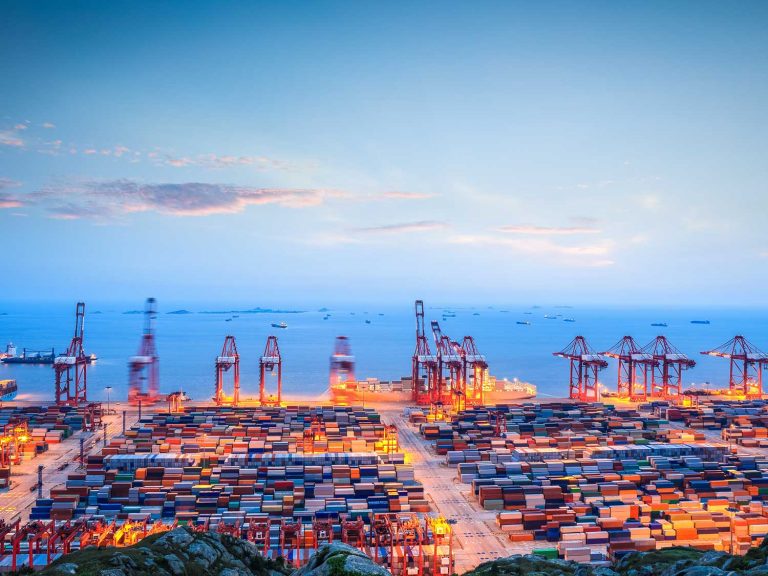
Date:
China supply chain pressures relentless
Despite talk of restarting manufacturing and a tiered reopening of Shanghai and the surrounding province, the situation remains challenging and delays are increasing in Ningbo as the volume of cargo diverted from Shanghai continues to grow.
The Shanghai lockdown remains for a fifth week, with offices, workplaces, and public transport closed. Airport and container terminals remain operating, though restricted by the availability of transport to deliver and remove cargo, along with manpower and access issues caused by the current related restrictions.
Drivers are still subject to daily PCR testing (with additional ad-hoc testing imposed at short notice) and Shanghai and local road permits are required to enter cities in Jiangsu province and the local permit must be applied by the exporter, it can’t be the agent or haulier.
A number of major airlines continue to serve Shanghai, but restrictions limiting transport to and from the airport mean that cargo is diverting to other airports in the region and beyond.
The current issues look likely to remain until mid-May, at the earliest. In the meantime our team are re-routing cargo where it is possible and cost-effective, ensuring all available options are utilised.
Shanghai container terminals, in Waigaoqiao and Yangshan, operate as normal, but again they are affected by local transport availability and terminal handling capacity is limited due to availability of workers and COVID-safe working.
The situation is being further impacted by blanked sailings, delays, and longer waiting times, though the availability of ISO tank containers is improving and some carriers have lifted a stop on bookings for dangerous goods cargoes.
When transport can be allocated we continue to move FCL cargo through Shanghai ports, with the option of diversion, when appropriate. Though with increasing quantities of cargo diverting from Shanghai and Zhejiang province, Ningbo has become very congested and the announced blank sailings will very likely worsen the situation.
With Beijing expected to be the next major lockdown area, Shanghai is unlikely to see any relaxation of the rules and the “zero-virus’’ approach is likely to be pursued until the very end, which could be throughout the rest of 2022 in some form.
Guangzhou is on the COVID watch list, with the city’s airport, which has been handling large volumes of cargo diverted from Shanghai, cancelling all domestic flights due to suspected cases.
Local areas in Shenzhen are operating under different measures with factories and offices open or closed, based on the local conditions. Air and ocean facilities are operating, but the situation for local transport capacity and availability varies and drivers require a cleared 24 hours PCR test. The situation is very dynamic and changing daily with localised interpretations of regulations and requirements.
Cross-border trucking between China and Hong Kong is still struggling with capacity limitations due to long waiting times for control and restrictions. Large volumes of cross-border traffic continues to be transported by feeder services.
Reduced land-side trucking capacity continues to be a limiting factor, with significantly reduced capacity available for cargo collections and deliveries, which means factories may not meet planned delivery schedules.
We will continue to closely monitor the situation and update you as changes occur, but we do recommend checking with your vendors, to clarify the status of your orders, and whether they have actually been manufactured.
When China does begin to lift lockdowns it is not inconceivable that the manufacturing bounce-back could happen within weeks, as the government will be very focused on getting production up and running again. It is widely understood that this could have a serious impact, particularly if it coincides with the start of the traditional ‘peak season’. Spot/ FAK rates are expected to head north very quickly, as demand returns through product being made and logistics loosening up internally, within China’s transport systems.
We hope to see supply chains start to flow freely again quickly, as the pent-up demand for delayed goods could quickly create congestion, if operations are not running optimally. With the long term fixed price and capacity agreements we have in place with our partner carriers we are well positioned to continue to deliver resilient, consistent and reliable supply chain movements throughout the year. This has been our recommended model during the pandemic and continued challenges experienced over recent months.
Metro’s cloud-based supply chain management platform, MVT, simplifies the most demanding global trading regimes, by making every milestone and participant in the supply chain transparent and controllable, down to individual SKU level.
To discuss how our technology could support your supply chain, please contact Simon George our Technical Solutions Director or Elliot Carlile.
